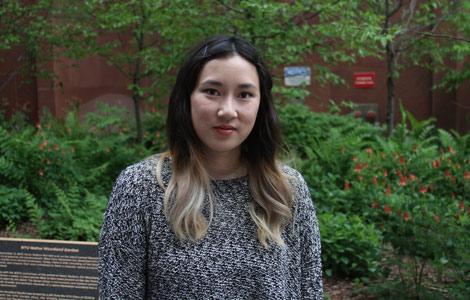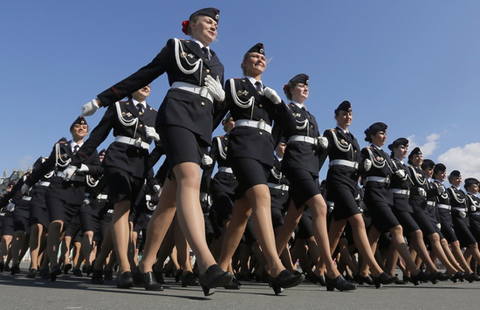Volunteers need more training
Updated: 2014-05-19 07:41
By Yang Yang and Peng Yining (China Daily)
|
||||||||
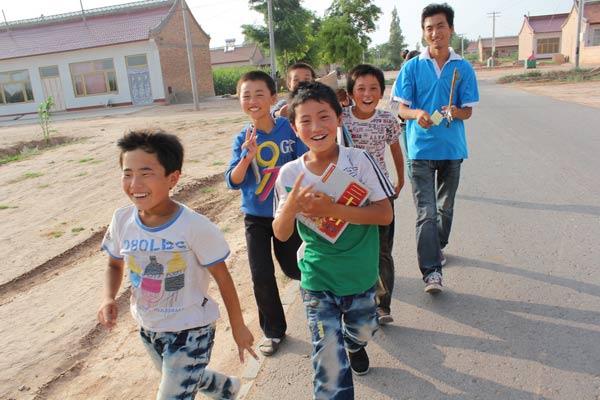 |
| Children from impoverished families in Northwest China’s Ningxia Hui autonomous region, are helped by a volunteer from Project Sunrise, which provides assistance with educational issues. PROVIDED TO CHINA DAILY |
The number of people involved in volunteer work in China is rising, but many organizations lack the resources and funding needed to provide new recruits with adequate training, as Yang Yang and Peng Yining report.
At the end of March, the news that a volunteer for an non-governmental environmental protection organization had blackmailed a man caught fishing illegally focused attention on the organization and management of China's voluntary bodies.
|
New dawn, new hope The drive to raise the number of volunteer workers in China has seen their recruitment and management become a challenge for many organizations. Project Sunrise, a grassroots organization that provides help for college and school dropouts and students from poor families, supports more than 500 people from impoverished families in the Ningxia Hui autonomous region, according to Liu Yaohui, the project's director. "We only have five full-time staff, so we couldn't operate without volunteers," the 30-year-old said. The project has more than 70 volunteers who travel more than 100 kilometers every month to visit families, assess their situations and report back. The journeys can be arduous, especially as a number of isolated villages don't even have a road that connects them to the outside world. "We have more than 300 people, mostly college students, signing up every time we recruit, but only about 10 percent remain active for longer than a few months," he said. Since the project started in 2007, Liu and his colleagues have worked out a process to manage the volunteers. "Every candidate has to attend two interviews with senior volunteers and staff. Recruitment is the first step in the process and also the most important. We don't have to have the most-brilliant people, but we do need to discover which volunteers are really dedicated to our project," he said. A group of about 10 senior volunteers oversees the management and training of new recruits, thus leaving the full-time staff with more time to undertake other work. "We encourage our volunteers to engage as deeply as possible in the project, so, in addition to their achievements in helping people, they are equipped with a wider set of skills and leadership training," Liu said. "Many students go on to work as NGO leaders after their voluntary stint at our project." By Peng Yining |
In September 2013, volunteers from the Yueyang Finless Porpoise Protection Association spotted He Huanglin using an electrical discharge to stun fish in Dongting Lake in Yueyang, Hunan province. When He pleaded with the volunteers not to report him to the authorities, they agreed and said they would contact him later. The following day, an association volunteer named Li Jinsong asked He for 10,000 yuan ($1,600), which he said would "bring you benefits," according to a statement written by He, the Xinhua News Agency reported.
When questioned by police, Li admitted that he had taken the money, but said he believed it had been given willingly in appreciation of his voluntary work. Li used the money to buy gasoline and repair his car, pointing out that because he used the vehicle for his volunteer work, he had spent the money to ensure he could continue to monitor illegal fishing, according to Xinhua.
The story highlighted the problems faced by many voluntary organizations, including a lack of funding, almost negligible training programs, and the difficulties of recruiting and managing volunteers.
The China Charity Blue Book, published recently by the Chinese Academy of Social Sciences, shows that by the end of 2013, there were 73.5 million registered volunteers in China, accounting for 5.65 percent of the population. The report estimated that a further 30 million regularly worked as unregistered volunteers. According to the Beijing Volunteers' Association, the city had more than 2.3 million registered volunteers in mid-May, and the number is rising every day.
Cause for concern
However, while the rise in numbers may be a cause of celebration, the cheers often obscure the fact that large numbers of untrained volunteers can be a cause for concern, both for those they are attempting to help and the volunteers themselves.
When a magnitude-8 earthquake devastated Wenchuan in the southwestern province of Sichuan province in May 2008, huge numbers of enthusiastic people formed voluntary societies and rushed to the stricken area to help. However, the lack of training or coordinated management resulted in the volunteers targeting areas spotlighted by media reports, but their lack of experience and basic supplies, such as food and water, resulted in them becoming a burden on the locals and the official rescue teams. Moreover, the heavy focus on a few main areas meant that other parts of the disaster zone were denied crucial support.
The story was much the same in April 2013, when a magnitude-7 earthquake hit Lushan in Sichuan. Once again, droves of unregistered, untrained volunteers from across China arrived in the area, many in their own cars laden with bottled water, instant noodles and blankets. Despite the volunteers' good intentions, the huge increase in traffic blocked roads and prevented the official rescuers from entering, and in some cases even approaching, the worst-hit areas. The situation became so bad that the government was forced to forbid volunteers from traveling to the region.
Although fewer than 8 percent of the population takes part in organized voluntary activity, a far lower proportion than in countries such as the United States and the United Kingdom, China's long history as an agrarian society where cooperation was essential means that people have a highly developed sense of mutual self-interest, said Cheng Fen, deputy director of the research department at the China Philanthropy Research Institute with Beijing Normal University.
However, altruistic impulses need to be regulated for optimum effect, according to Cheng, who said the biggest problem is the imbalance between demand and supply. "I've been talking with college students. Many said they really wanted to provide voluntary services for those in need, but were unable to find the kind of issues that interested them and they were good at dealing with. Conversely, many communities and organizations require help, but have been unable to find suitable organizations and volunteers. I think that's the most urgent problem facing the sector," she said.
Another problem is that most Chinese people take part in voluntary activity very infrequently, and huge national and international events, such as the 2008 Beijing Olympic Games and the 2010 Shanghai Expo, attract the lion's share of interest, she said.
"Big events can promote the development of voluntary work in China, but they are government-run and supported, so the authorities organize publicity campaigns to encourage people to join in. Sadly, when events such as these finish, the volunteers often stop working too, and don't commit to other causes. Being a volunteer isn't part of the lifestyles of most Chinese people. In everyday life, there is a huge demand for voluntary services, and we need to find a way to balance demand and supply," said Cheng.
In many cities, professional platforms have been set up to solve the problem. In Beijing, registered organizations and individuals can post their services or requirements on www.bv2008.cn, an online "marketplace", where those in need of voluntary services can contact the appropriate organizations and the organizations themselves can advertise their existence and expertise.
Meanwhile, a lack of professional knowledge, experience and skills has forced voluntary bodies to arrange issue-related training to avoid making bad situations even worse.
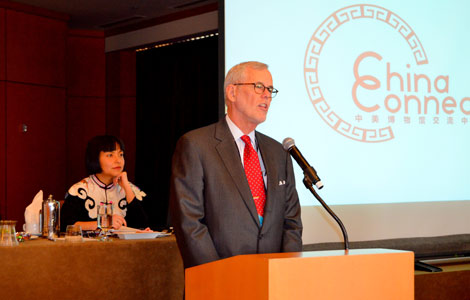
 President of AAM welcomes representatives from museums
President of AAM welcomes representatives from museums
 Yiwu manufacturers score big in lead up to soccer world cup
Yiwu manufacturers score big in lead up to soccer world cup
 Chinese folk dance shown in NYC parade
Chinese folk dance shown in NYC parade American Civil War re-enactment in Illinois
American Civil War re-enactment in Illinois
 Thousands of dancers attend annual dance parade in NYC
Thousands of dancers attend annual dance parade in NYC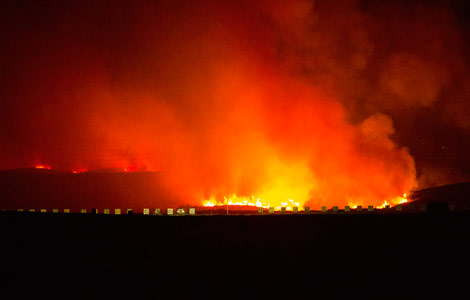
 Wildfires rage in California
Wildfires rage in California
 ICN International Music Festival kicks off
ICN International Music Festival kicks off
 New York recalls the World's Fair glory days
New York recalls the World's Fair glory days
Most Viewed
Editor's Picks

|

|

|
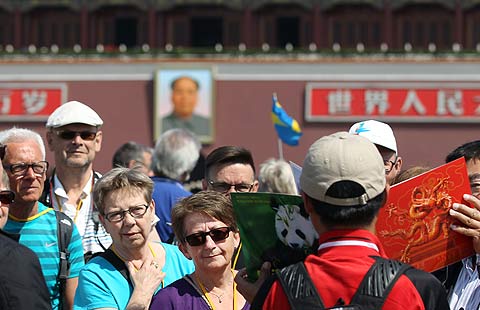
|
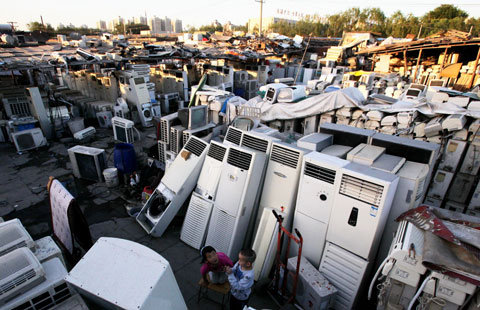
|

|
Today's Top News
China, US boost military ties, general says
Republican 'establishment' squeezes Tea Party
1st responders visit Sept 11 Museum
Jumei IPO raises $245.1 million
Investors play it safe as doubt over economy rises
Obama marks anniversary of desegregation ruling
Arson suspect charged in California
China, US boost military hotline
US Weekly

|

|
